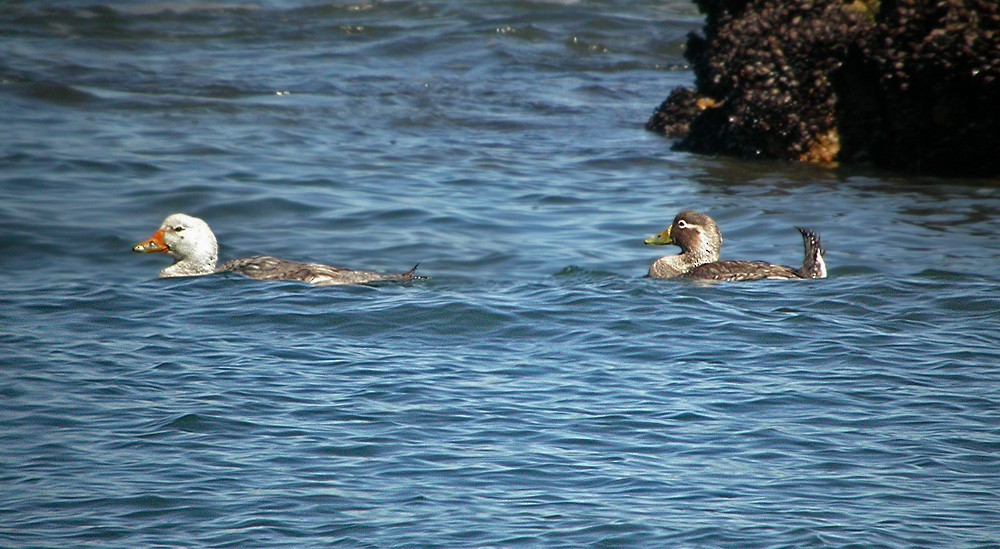White-headed Steamer-duck
A species of Steamer ducks Scientific name : Tachyeres leucocephalus Genus : Steamer ducks
White-headed Steamer-duck, A species of Steamer ducks
Botanical name: Tachyeres leucocephalus
Genus: Steamer ducks
Content
Description General Info
 Photo By Lars Petersson
Photo By Lars Petersson Description
Adult male Chubut steamer ducks have white heads with a bright yellow/orange bill with a black nail. Their webs and feet are yellow/orange with black claws. The rest of their plumage includes mostly grey bodies and white bellies. While the male is molting his bill turns to a duller yellow/orange. Adult female Chubut steamer ducks have brown heads and necks with small white line going from the back of the eye to the fore-neck. Their bills have a greenish/yellow color. The Adult female Chubut steamer duck looks very similar to the juvenile. 
Size
74 cm
Nest Placement
Ground
Feeding Habits
White-headed Steamer-duck predominantly consumes molluscs and crustaceans, obtained through diving, upending, and dabbling. White-headed Steamer-duck forages both in water and on land, staying near the coast. They possess unique adaptations for their diverse foraging techniques.
Habitat
The white-headed Steamer-duck is typically found in a variety of shoreline environments along coastal areas, favoring island shorelines as well as mainland sites. This bird prefers habitats that offer protected areas such as rocky headlands and sheltered coves, where it can find resting spots.
Dite type
Omnivorous
General Info
Feeding Habits
Bird food type
Distribution Area
The Chubut steamer duck was originally thought to only be found strictly in the southern coast of the Chubut province in Argentina. However it is now known to have a larger range from the southern portion of the San Matías Gulf to Islote Chato. The crucial populations for this species are found in Bahía San Gregorio (Argentina) [1], Bahía Melo [2], and Caleta Malaspina[3]. These three crucial populations are all located in the San Jorge Gulf. 
Species Status
Chubut steamer Ducks face many threats such as oil exploration, habitat destruction, predation, and invasive species. Other forms of threats they face are from guano, macroalgae and egg harvesting. There have been three major oil spills in the past 30 years that affected the ducks breeding areas by directly being coated with oil and polluting the substrate that the ducks make their nests on. The three main invasive species affecting the Chubut steamer ducks are Carcinus maenas (Green Crab), Wakame (Asian Kelp or Undaria pinnatifida) and Balanus glandula (Acorn Barnacle). These invasive species indirectly affect the duck by altering the environment that it lives in. Sub-marine predators of this species include the South American sea lion (Otaria byronia) and Killer whale (Orcinus orca). The two species that are commonly observed preying on Chubut Steamer duck eggs are the Kelp gull (Larus dominicanus) and Crested caracara (Caracara plancus). Egg harvesting has only been reported in low numbers and is not as large of a threat as others mentioned. 

 Photo By Lars Petersson
Photo By Lars Petersson Scientific Classification
Phylum
Chordates Class
Birds Order
Waterfowl Family
Geese Genus
Steamer ducks Species
White-headed Steamer-duck